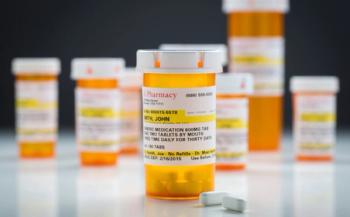
Loss Aversion: Reducing the Risk of New Rx Drugs
Dr. Pamela Walker asks, in an increasingly competitive marketplace, with greater understanding of behavioral biases such as loss aversion, how can pharma professionals use loss aversion to propel brands to success?
Sometimes, the very thought of trying something new can fill us with dread. As human beings, it is a natural part of our makeup to derive safety and comfort from what we know, even when the potential benefits of the unknown are significant.
This aspect of behavior is central to the understanding of loss aversion, and in the pharma world, this behavior bias can play a crucial role in the successful adoption of new prescription drugs, which are often perceived as risky.
Loss aversion can be described as a prominent cognitive bias, by which we fear losses more than desire equivalent gains. Put simply, in order to change a behavior or tendency, the positives have to outweigh the negatives quite substantially-twofold to be precise.
There is plenty of research to substantiate the claim that to change behavior (and no longer “fear a loss”), a new option needs to promise twice as much as the old. Daniel Kahneman and Amos Tversky are two of the early pioneers of loss aversion and their work shows the psychological impact of a loss to be about 2 to 2.5 times that of a gain. To use a monetary example, this means that to accept an even chance of losing £10, most people require an upside of £20 or £25.
In everyday situations, loss aversion is most commonly displayed as inactivity. “If it ain’t broke, don’t fix it”, “better the devil you know”; there are numerous phrases we can use to describe it-and whether the issue is switching to a new brand of toothpaste, reading a new genre of book, or changing personal trainers at the gym, we have all experienced some form of loss aversion.
Pharma patients: Losing or gaining?
If we use the monetary example as an efficacy baseline in pharmaceuticals, we also need to add a “safety” element. In the pharmaceutical arena, we experience loss aversion acutely. Physicians are wary of prescribing new brands and unknown drugs, while patients are equally wary of switching brands. Even when current treatments are deemed suboptimal, the “devil you know” argument rears its head.
While the comparisons of trainers and books are useful for context, it is obvious that switching biologics is not as straightforward as swapping toothpastes. Physicians are and must be aware of the efficacy and safety in order to do the careful loss-aversion calculation for risk in their mind’s eye. Indeed, it is the critical need for safe as well as effective treatments that challenges drug developers to come up with products that tick all the boxes. Our inbuilt fear of the unknown in these instances can protect us from harm, and make this a very prominent example of why a twofold benefit is necessary.
As such, loss aversion helps explain why new treatments that perform relatively well in black and white struggle to shift market share unless they offer a dramatic benefit over current options. This doesn’t necessarily mean that in time the best treatments won’t succeed, but it does help explain why uptake can be slow and the first few customer experiences are crucial.
Tipping point
So in an increasingly competitive marketplace, with greater understanding of behavioral biases such as loss aversion, how can pharma professionals use loss aversion to propel brands to success? And how can the benefit (or risk) be tipped in favor of changing current behaviors?
There are a number of factors that can go some way to help address the necessary risk gap, with four in particular we can use to leverage loss aversion bias and maximize marketing efforts:
1. Establish the size of the gap between the customer’s go-to brand and yours: If it isn’t obviously significant, other clever marketing techniques used to breakdown habits will be key, as a rational argument will most likely fall prey to loss aversion.
2. Reassure customers on potential losses via additional support services: Another way of getting around a small gap between your brands vs. the competition is to gain an in-depth understanding of what the “loss” could feel like and offer supplementary support services around this. Presenting the product as a package can boost its ratings.
3. Use reward to ease the pain of loss: Is there a particular benefit this new/alternative product has and how can we maximize this benefit so that prescribers interpret it as a gain/reward?
4. Identify other behavioral biases to leverage: Biases don’t often operate in isolation. It may be that other forces are also at play in addition to loss aversion, including social norms, affect, and framing, for instance. By addressing these and using them to our advantage, we can further reduce the perceived size of the loss vs. the gain.
Overall, this heightened understanding of loss aversion means that there are steps we can take in advance of a new product launch, a repositioning, or revised market strategy to maximize opportunities with customers.
In order to do so, however, we need to have a clear assessment of the work through their eyes-what are their perceived losses and how can we best position gains? Once these elements are established, pharma professionals will be better placed to reframe a brand and ensure that the benefits far outweigh the risk.
Dr. Pamela Walker is the Head of Health at Incite. She can be reached at
Newsletter
Lead with insight with the Pharmaceutical Executive newsletter, featuring strategic analysis, leadership trends, and market intelligence for biopharma decision-makers.




